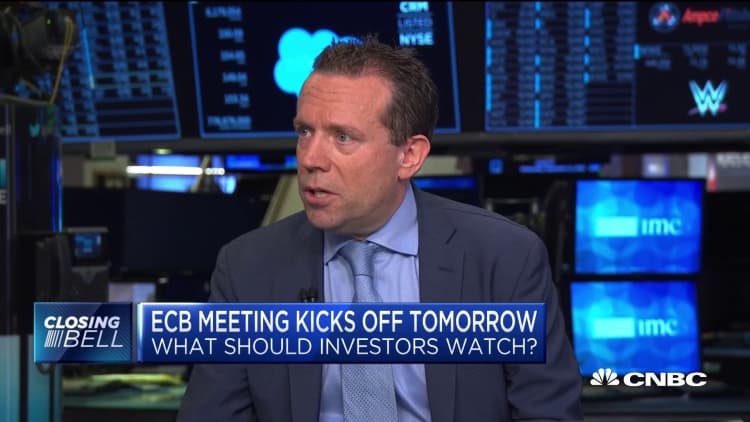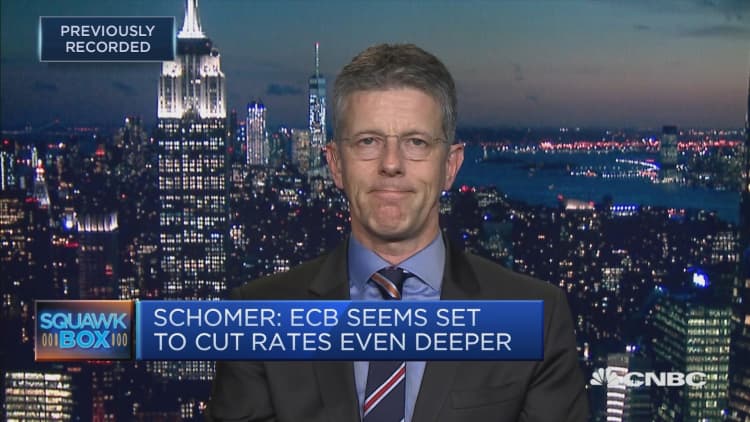The European Central Bank (ECB) and its outgoing President Mario Draghi are caught in a "Catch 22": The market is expecting so much stimulus on Thursday that it seems almost impossible to surprise on the upside.
The economy is showing further signs of weakness, the inflation rate is not picking up and the U.S.-China trade war has no real end in sight. So what will the ECB do?
"We still think that Mr Draghi will muster a sufficient majority in the Governing Council to push through a package that will include rate cuts as well as a restart of the asset purchase program," Dirk Schumacher, an ECB watcher with Natixis, said in a note to clients.
The meeting comes as some ECB hawks in recent weeks have been trying to downplay the chances of a huge stimulus package.
"There is, judging from (the) latest comments coming out of the Governing Council, no clear consensus within the Governing Council regarding the size and scope of potential easing measures."

Recent economic data is not suggesting anything particularly positive, although the leading indicators have somewhat stabilized. Purchasing Managers' Indexes for Europe show a stabilization, albeit the weakness persists in the industrial space. The question is if and when the spillover will happen to the service sector and to the labor market — especially in the larger economies like Germany and France.
So given this huge expectation the ECB is dealing with, is there room for an upside surprise?
"Potential surprises could include an expansion of the QE (quantitative easing)-eligible universe to new asset classes (senior bank debt or equities), or more radical changes to QE parameters (removing capital keys)," said Frederik Ducrozet, who watches the ECB at Pictet in Geneva.

"The bar for such radical changes seems high, although we would rule out nothing in a more adverse scenario next year."
In detail the ECB is expected to do the following:
- Cut its deposit rate.
- Re-launch monthly net asset purchases.
- Strengthen its forward guidance by extending the horizon to keep rates at present or lower levels beyond the first half of 2020.
- Introduce a tiering system for bank deposits.
- Raise the self-imposed issuer limit for purchases of government bonds from 33% to 40%, or even 50%.
If that is what we get, it will probably be the most comprehensive package ever by the ECB and a sign that the central bank has changed under the new Chief Economist Philip Lane.
Even though critics are getting louder and louder questioning the effectiveness of further easing, Draghi — in his last few weeks as president — is getting more and more vocal about weaker-than-expected inflation.
"As you know, inflation expectations now have been at historical lows for some time. So we have to consider that. With the admission — and that's again very important — with the admission that we don't like this," he said during the last press conference in July.
It's likely he's not much happier now.


